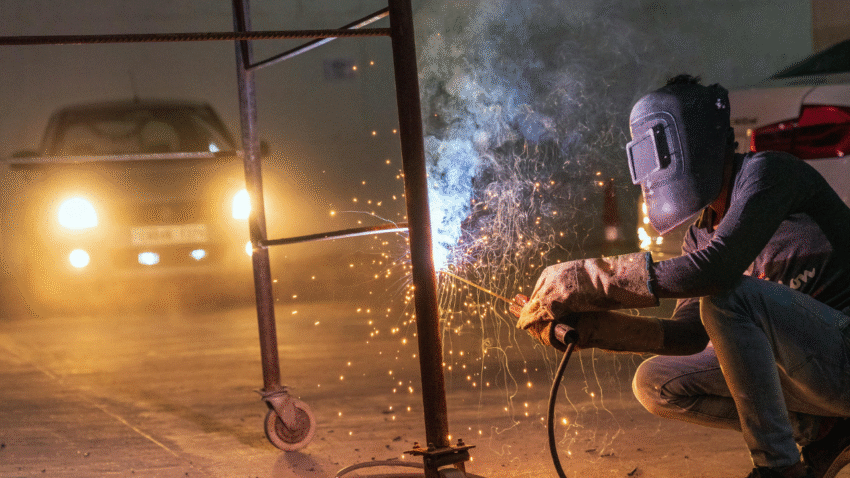Introduction
Garages often suffer from poor lighting, relying on dim overhead bulbs or harsh fluorescent fixtures. Adding skylights to your garage roof can completely transform the space—flooding it with natural light, reducing the need for artificial lighting during the day, and even boosting the overall value of your home. Whether you use your garage for parking, a workshop, or storage, skylights can make it more inviting and functional.
This guide walks you through everything you need to know before installing skylights, from planning and choosing materials to installation and maintenance.
Benefits of Adding Skylights to Your Garage
- Natural Light: Makes the space brighter and more pleasant to work in.
- Energy Savings: Reduces dependence on electric lighting during the day.
- Ventilation (if opening skylights are used): Helps remove fumes and heat.
- Aesthetics: Adds architectural interest to your garage.
- Health Benefits: Natural light improves mood and productivity.
Step 1: Assess Your Garage Roof
Before you start planning, evaluate the type and condition of your garage roof:
- Roof Type: Is it pitched (sloped) or flat? Pitched roofs make water drainage easier and are more skylight-friendly.
- Roof Material: Asphalt shingles, metal roofing, and tiles each require different installation methods.
- Structural Condition: Rafters and trusses must be in good shape to support the skylight without compromising the roof’s integrity.
- Sunlight Direction: A south-facing skylight brings in more light but may cause overheating, while north-facing skylights provide consistent, softer light.
Step 2: Choose the Right Skylight Type
Skylights come in various designs to suit different needs and budgets:
- Fixed Skylights
- Do not open; purely for natural light.
- Best for garages that don’t need extra ventilation.
- Ventilated Skylights
- Can be opened manually or electronically to let in fresh air.
- Useful in garages where you work with paints, chemicals, or machinery.
- Tubular Skylights (Sun Tunnels)
- Small, round skylights that channel light through reflective tubes.
- Great for garages with limited roof space or obstructions.
Step 3: Select Skylight Glazing
The type of glazing affects energy efficiency, durability, and light quality:
- Tempered Glass: Strong and shatter-resistant, ideal for safety.
- Double or Triple Glazing: Better insulation and energy efficiency.
- Low-E Coatings: Reduces UV rays and heat transfer.
- Polycarbonate or Acrylic: Lightweight and impact-resistant but may scratch over time.
Step 4: Plan the Placement
Positioning is critical for maximum light and minimal issues:
- Between Roof Rafters: Minimizes the need for structural modifications.
- Avoid Roof Obstructions: Stay clear of chimneys, vents, and solar panels.
- Light Distribution: Place skylights evenly to spread light throughout the garage.
Pro Tip: For every 150–200 square feet of garage space, one standard-size skylight (around 2×4 feet) is usually enough for adequate lighting.
Step 5: Gather Tools and Materials
For a DIY installation, you’ll typically need:
- Skylight unit (with flashing kit)
- Tape measure
- Circular saw or reciprocating saw
- Roofing nails and screws
- Roofing felt and sealant
- Pry bar and hammer
- Ladder and safety harness
- Protective gloves and eyewear
Step 6: Installation Process
Note: If you’re not comfortable working on roofs or cutting into structural components, hire a professional installer to avoid leaks and damage.
1. Mark the Opening
- From inside the garage, measure and mark the skylight’s location between rafters.
- Drill pilot holes at the corners to guide your roof cuts.
2. Cut the Roof Opening
- On the roof, use the pilot holes as a guide to cut out the opening.
- Remove shingles around the opening carefully so they can be reinstalled.
3. Install the Skylight Frame
- Follow the manufacturer’s instructions to secure the skylight to the roof framing.
- Ensure the frame is level and square to avoid leaks.
4. Add Flashing
- Install the included flashing kit to direct water away from the skylight.
- Overlap shingles over the flashing for a watertight seal.
5. Seal and Insulate
- Apply roofing sealant around the edges.
- Add insulation around the skylight frame from the inside to reduce heat loss.
6. Reinstall Interior Finishes
- If desired, finish the inside edges with drywall or trim for a polished look.
Step 7: Check for Energy Efficiency
To keep your garage comfortable year-round:
- Choose skylights with an Energy Star rating.
- Install blinds or shades to control heat gain in summer.
- Consider adding a UV filter to prevent fading of stored items.
Step 8: Maintenance Tips
- Inspect Annually: Check for cracks in the glass, worn seals, or flashing issues.
- Clean Regularly: Use mild soap and water on glass; avoid abrasive tools.
- Clear Debris: Keep leaves and branches off the skylight to prevent water pooling.
Safety Considerations
- Always use a safety harness when working on the roof.
- Never install skylights in severe weather conditions.
- If your garage roof has asbestos shingles, hire a professional to handle removal.
Cost Breakdown
- DIY Skylight Kit: $150–$500 depending on size and features.
- Professional Installation: $800–$2,500 per skylight.
- Tubular Skylights: Usually $400–$1,000 installed.
Conclusion
Adding skylights to your garage roof is a game-changing upgrade that not only brightens your space but can also make it more energy-efficient and enjoyable to use. With careful planning, the right materials, and proper installation, you can enjoy a brighter, more welcoming garage for years to come.
